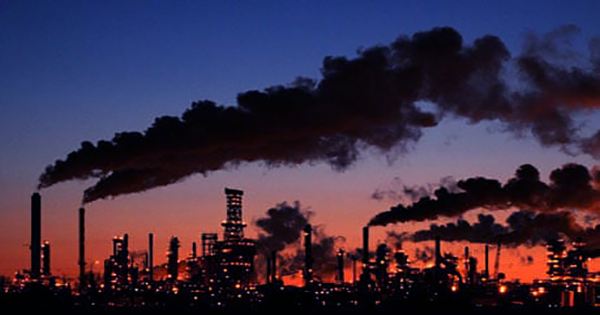According to new research that was just published in Communications Earth & Environment, the Amazon rainforest and its Indigenous territories can absorb up to 26,000 metric tons of harmful pollutants each year that are released by fires. This would prevent thousands of cases of deadly respiratory and cardiovascular diseases as well as drastically lower the cost of healthcare in some of the most deforested cities in the world.
The new study’s authors analyzed data spanning ten years and discovered that each hectare of burned forest costs cities at least US$2 million in medical expenses to treat related illnesses. However, they also demonstrated that Indigenous forests, by absorbing pollutants from fires, help to prevent an estimated 15 million cases of respiratory and cardiovascular disease annually, saving the health care system US$2 billion.
In the “arc of deforestation,” the southeast corner of the rainforest where the most forest cover has been lost to agro industry and other legal and illegal activities, the paper also discovers that heavily forested Indigenous lands are protecting urban and rural populations, frequently on the other side of the Amazon River.
“Worldwide, forests are known for absorbing pollutants from fires through pores on the surface of the leaves, but this is the first time we have estimated the capacity of tropical forests to do this,” said Dr. Paula Prist, senior research scientist at the EcoHealth Alliance and lead author on the study. “Our results indicate that the Amazon rainforest can absorb as much as 26,000 metric tons of the particles every year, and Indigenous territories are responsible for 27% of this absorption, while covering only 22% of the rainforest.”
Released just days before President Lula completes his first 100 days in office, the findings could add urgency to the Brazilian leader’s promise to recognize and enforce the land rights of Indigenous peoples, already proven to play an outsize role in reducing the deforestation and biodiversity loss in the Amazon.
Despite the challenges, we were able to evaluate the contribution of the Amazon forest and the Indigenous territories to the maintenance of human health, and the economic benefits that its conservation can bring. Our numbers probably underestimate the ecosystem services provided by the Amazon rainforest and its Indigenous territories because there are no calculations for the pollutant absorption rates of tropical trees.
Dr. Florencia Sangermano
“Science has shown that Indigenous-managed forests suffer less of the deforestation that drives climate change and pandemic risk, but this is the first effort to quantify how they benefit human and economic health, indicating that the benefits go far beyond the borders of these territories,” said Dr. Florencia Sangermano, a co-author of the new study and an expert in the use of geospatial analysis and satellite remote sensing to evaluate changes in the Earth system, and to assess their effect on ecosystems and biodiversity.
The team of researchers, from Clark University, EcoHealth Alliance, George Mason University, the National Autonomous University of Mexico and the University of São Paulo, focused their analysis on the Brazilian Legal Amazon, an area that covers more than half the Brazilian territory, including 722 towns and cities.
During the fire season, from the end of July through November, the region becomes “among the most polluted places on Earth,” Prist and her co-authors noted.
Forest fires in tropical forest nations cause 90% of the particulate matter emitted by fires, including those in the Amazon basin. Additionally, compared to forests in other biomes, the evergreen broadleaf forests of the Amazon are more likely to release black and organic carbonaceous aerosols, which are the main elements of the fine particulate matter linked to the region’s rising rates of respiratory and cardiovascular diseases.
Between May 19 and October 31, 2021, fires in the Amazon consumed 519,000 hectares of forest, with Brazil losing the most forest cover to fires, according to the report. “The number of fires has been increasing in the last few years,” Prist said. “And in 2020, deforestation rates reached the highest levels of the decade in the Brazilian Amazon.”
Other studies have demonstrated how Indigenous land stewardship prevents enormous tracts of forest from burning, leading them to draw the conclusion that Amazon forests shield nearby settlements and reduce smoke damage. The new paper goes further.
The authors came to the conclusion that Indigenous territories are providing the health and economic benefits to populations that may be as far away as 500 kilometers from where the fires are burning by taking into account the ability of the pollutants to travel long distances and the capacity of the rainforest to absorb them.
“Our results suggest there is a need to act now in advance of the fire season to protect Indigenous peoples and their forests as a matter of public health,” Prist said. “Failure to recognize and enforce the land rights of Indigenous peoples in the Amazon could lead to deforestation of their lands and an increase in the number of reported infections, as well as a significant rise in health care costs, particularly in already deforested areas.”
The Brazilian Legal Amazon currently contains 383 recognized Indigenous territory that span more than 1,160,000 square kilometers. According to the latest research, only five regions, the majority of which are in the Brazilian Amazon’s heavily forested western section, account for 8% of the rainforest’s ability to absorb particles from forest fires.
The scientists linked two million cases of respiratory and cardiovascular disease to an estimated 1.7 metric tons of particles released every year by fires during the dry season, which typically begins in late July, using reports of cardiovascular and respiratory diseases across the Amazon as well as data on pollutants and forest cover. This finding suggests that harming the rainforest could result in a far greater number of pollutants and higher rates of disease.
The scientists relied solely on satellite data to calculate emissions from fires, which are frequently started intentionally to unlawfully clear land for crops or pasture due to a lack of exact meteorological data.
The researchers calculated the Amazon’s potential to absorb the particles that fires generate during the dry season instead of measuring the rainforest’s actual clearance rates, basing their estimates on data from temperate regions.
“Despite the challenges, we were able to evaluate the contribution of the Amazon forest and the Indigenous territories to the maintenance of human health, and the economic benefits that its conservation can bring,” said Sangermano, an assistant professor of geography at Clark University.
“Our numbers probably underestimate the ecosystem services provided by the Amazon rainforest and its Indigenous territories because there are no calculations for the pollutant absorption rates of tropical trees.”
















